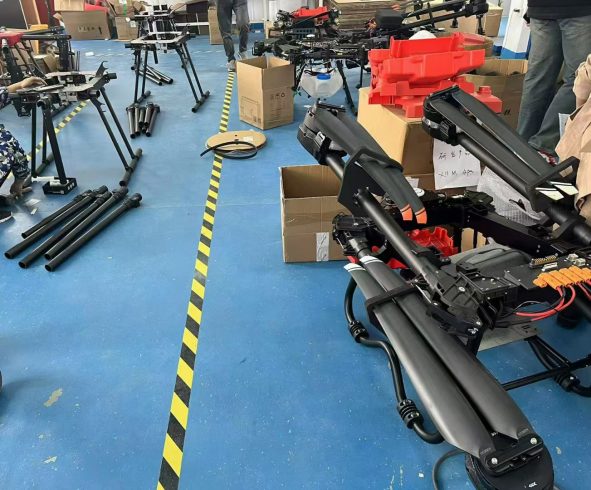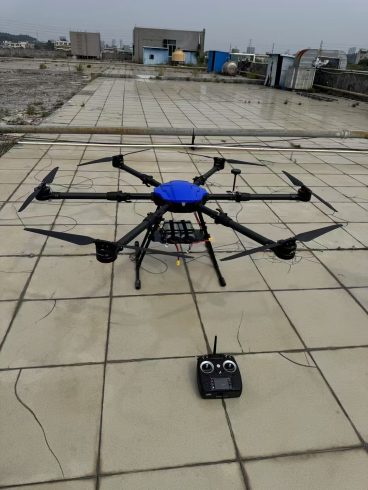![图片[1]-Drone Sprayers in Tea Plantations: Brewing Efficiency with Precision Agriculture-msoen](https://www.msoen.com/wp-content/uploads/2025/04/164e113f97214114-576x1024.jpg)
Tea, one of the world’s most beloved beverages, thrives in lush, often mountainous regions with delicate ecosystems. Traditional tea plantation management—especially pest control, fertilization, and disease prevention—relies heavily on manual labor or ground-based machinery, which struggle with steep slopes, dense foliage, and the need for chemical precision. Enter drone sprayers: a transformative technology that’s reshaping tea cultivation by merging aerial agility with data-driven farming. This article explores how drones are enhancing productivity, sustainability, and quality in tea plantations worldwide.
Challenges in Tea Plantation Management
Tea estates face unique hurdles:
- Hilly Terrain: Many tea-growing regions, like Darjeeling or Sri Lanka’s highlands, feature slopes exceeding 30 degrees, limiting tractor access.
- Dense Canopy Layers: Tea bushes form thick foliage, making it difficult for chemicals to penetrate evenly.
- Sustainability Demands: Global consumers increasingly prioritize organic and eco-certified teas, requiring minimal pesticide residues.
- Labor Intensity: Manual spraying is time-consuming, costly, and exposes workers to chemical risks.
- Microclimate Variability: Altitude and humidity fluctuations create localized pest and disease hotspots.
Drone sprayers address these challenges while preserving the environmental integrity of tea-growing regions.
How Drone Sprayers Elevate Tea Cultivation
- Precision Chemical Application
- Targeted Spraying: Multispectral cameras and AI algorithms identify pest infestations (e.g., tea mosquito bugs) or nutrient-deficient zones, enabling spot treatments instead of blanket spraying.
- Canopy Penetration: Adjustable nozzles release droplets in sizes optimized to coat both upper and lower leaf surfaces, critical for combating fungi like Colletotrichum (black rot).
- Reduced Chemical Use: Drones cut pesticide and fertilizer usage by 30–50%, aligning with organic certification standards.
- Slope-Friendly Operations
- Terrain-Following Technology: Drones automatically adjust altitude to maintain a consistent 2–3 meter height above uneven slopes, ensuring uniform coverage.
- Zero Soil Compaction: Unlike tractors, drones protect fragile topsoil from erosion, a key concern in monsoon-prone regions.
- Speed and Scalability
- Drones cover 15–20 acres per hour, even in fragmented plots, reducing labor costs by up to 70%.
- Autonomous flight plans allow 24/7 operations, critical during disease outbreaks or weather windows.
- Environmental Stewardship
- Minimal Drift: Precision nozzles and low-altitude spraying reduce chemical drift to non-target areas, protecting biodiversity.
- Water Conservation: Drones use up to 90% less water than traditional methods by optimizing droplet size and distribution.
Technologies Powering Tea Plantation Drones
- AI-Driven Crop Monitoring
- Hyperspectral sensors detect early signs of stress (e.g., nutrient deficiency, drought) invisible to the naked eye.
- IoT-enabled weather stations sync with drones to adjust spraying schedules based on real-time humidity and rainfall data.
- LiDAR Mapping
Creates 3D maps of tea bushes and terrain, optimizing flight paths for maximum coverage and minimal overlap. - Swarm Intelligence
Fleets of drones collaborate to treat large estates simultaneously, guided by centralized AI platforms. - Solar-Powered Charging
Ideal for remote plantations, solar charging stations extend operational range without grid dependency.
Case Study: A Sustainable Transformation in Assam
A 500-acre organic tea estate in Assam, India, adopted drone sprayers to combat rising labor costs and tea leafhopper infestations. Results after one year:
- 40% reduction in neem-based pesticide costs through targeted applications.
- 25% higher yield due to healthier bushes and reduced chemical stress.
- Achieved Rainforest Alliance Certification, boosting export market value.
- Eliminated 200+ hours of manual labor monthly.
Overcoming Adoption Challenges
While promising, drone adoption in tea plantations faces barriers:
- Regulatory Hurdles: Strict aviation laws in countries like Kenya or China require permits and pilot certifications.
- Initial Costs: High-quality agricultural drones range from $20,000–$50,000, though leasing models are emerging.
- Battery Limitations: Steep terrain and frequent direction changes drain batteries; hybrid gas-electric drones are gaining traction.
- Farmer Training: Transitioning from traditional methods requires education on drone maintenance and data analysis.
Future Trends in Tea Estate Drone Technology
- Pollinator-Safe Sprays: Drones deploying organic, bee-friendly pesticides to protect surrounding ecosystems.
- Yield Prediction Integration: Combining spraying with AI-driven harvest forecasting.
- Blockchain Traceability: Spray records stored on blockchain for transparent “leaf-to-cup” sustainability claims.
- Autonomous Pruning: Drones equipped with AI vision to trim overgrown bushes post-spraying.
Choosing the Right Drone for Tea Plantations
Key considerations:
- Payload Capacity: 10–20L tanks balance coverage and agility for mid-sized estates.
- Wind Resistance: Look for drones stable in 10–15 mph winds common in high-altitude regions.
- Sensor Suite: Multispectral cameras and LiDAR are essential for precision.
- Battery Life: 25+ minutes per charge, with swappable batteries for large estates.
Conclusion
Drone sprayers are infusing tea plantations with unprecedented efficiency, sustainability, and quality. By replacing antiquated, labor-intensive methods with precision technology, drones empower growers to meet global demand for premium, eco-conscious teas while preserving the ecological balance of iconic regions like Darjeeling, Uji, or Nuwara Eliya.
While challenges like costs and regulations persist, the long-term benefits—enhanced yields, premium certifications, and environmental protection—solidify drones as indispensable tools in modern tea cultivation. As AI and green tech evolve, drone sprayers will continue to steep innovation into every aspect of tea farming, ensuring this ancient craft thrives in a sustainable future.











暂无评论内容